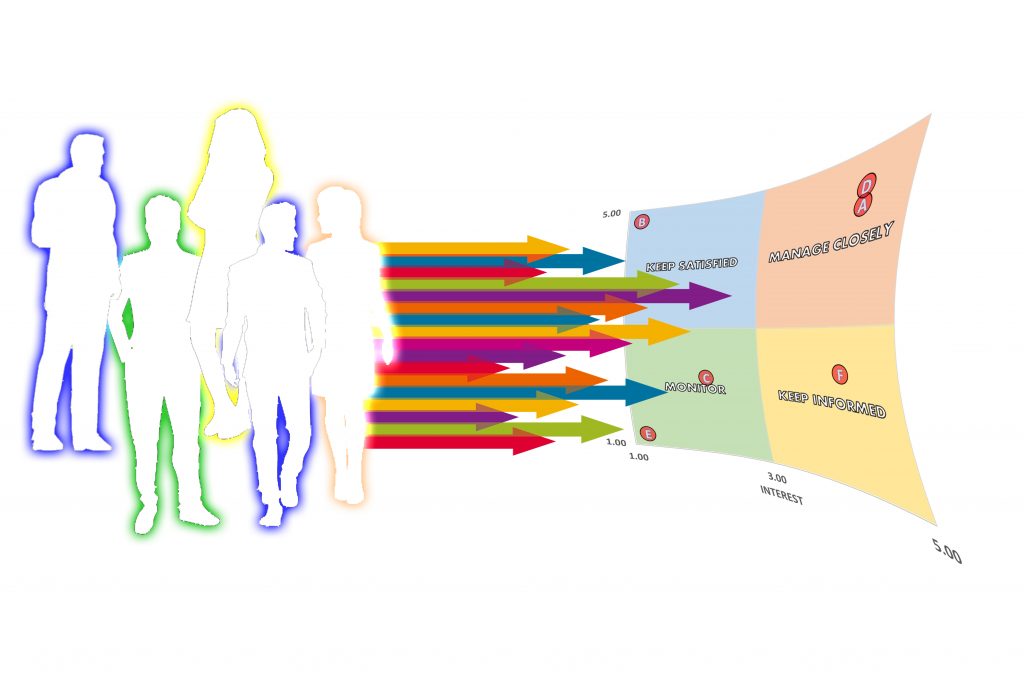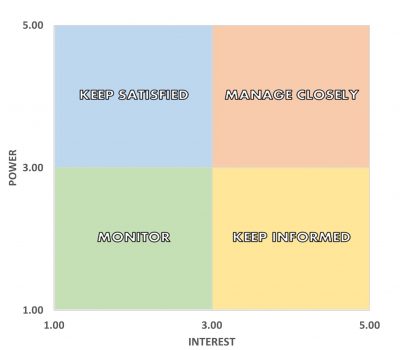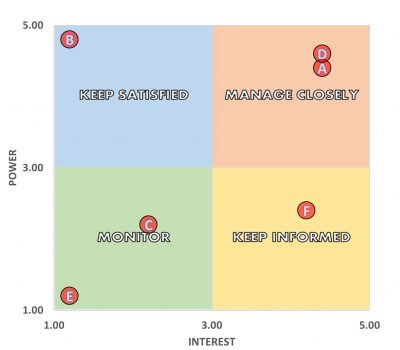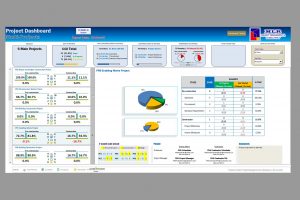Managing Project Stakeholders
- Marty Fuentes
- | November 25, 2020

“Project Stakeholder Management includes the processes required to identify the people, groups, or organizations that could impact or be impacted by the project, to analyze stakeholder expectations and their impact on the project, and to develop appropriate management strategies for effectively engaging stakeholders in project decisions and execution” (Project Management Institute Inc. 2017, p. 503).
What is a stakeholder
Project Management Institute Inc. (2017) defines a stakeholder as “an individual, group, or organization that may affect, be affected by, or perceive itself to be affected by a decision, activity, or outcome of a project” (p. 550). Project stakeholders can be directly or indirectly involved with the project. They can positively or negatively impact or be affected by the project during its execution or after its completion (Project Management Institute Inc. 2017). Watt (2014) describes stakeholders as “individuals who either care about or have a vested interest in your project” (p. 42). They can influence the success or failure of the project (Watt 2014).
Stakeholders can be internal or external. Internal stakeholders are directly involved with making decisions for the project (e.g., project owner, project manager, project team) while external stakeholders are those that can be impacted by the project (e.g., community, general public) (Atkin & Skitmore 2008).
Stakeholder Management and Its Importance
Stakeholders play a critical role in the success or failure of a project. They have expectations that need to be satisfied for it to succeed (Atkin & Skitmore 2008). Poor management of stakeholders may lead to its disaster. Their negative attitude towards the project can derail its progress, which, in turn, may result to the time exceeding what was initially planned and the costs to overrun the budget. This is because stakeholders have the resources needed by the project and they have the power to stop its implementation (Atkin & Skitmore 2008; Olander & Landin 2005).
Effective management of stakeholders can lead to better performance of the project. This entails identifying the stakeholders and their expectations at the onset of the project. Project managers need to identify as well the stakeholders at each phase of the project as their interest and influence do change at different phases of the project (Achterkamp & Vos 2008). Organisations that are stakeholder-centric are more likely to achieve project success (Joslin & Müller 2016). The literature is abounded with the underlying theme that good stakeholder management correlates to project success.
The Project Stakeholders
Stakeholders have different levels of interests towards the project. These varying views can only be understood if stakeholders are appropriately identified (Pouloudi & Whitley 1997). Davis (2014) analyzed a number of literatures to identify stakeholders commonly involved in projects by the frequency to which they are mentioned in the references. Table 2 presents her findings that show project managers as the stakeholder most commonly identified with project success. This is followed by the project team, client, contractor, and the consumer.
Stakeholder Prioritization Grid
From the identified stakeholders, their power and interest on a project can be assessed by mapping them in a power/interest matrix or the stakeholder prioritisation grid. By grouping them, the project can devise the most effective approach in communicating and building relationships with the various groups (Olander & Landin 2005). They are accorded with different level of importance to a project. The more important the stakeholder is, the more engagement the project needs to have with the concerned party (Boesso & Kumar 2009).

Stakeholder Prioritization Grid.
The grid has four quadrants of monitor, keep informed, manage closely, and keep satisfied. The stakeholder is mapped against the grid depending on their perceived power and interest on the project on the scale of one to five. Based on the position of the stakeholder on the grid, the following engagement type must be taken:
- Manage Closely (High Power, High Interest) – full commitment to manage these stakeholders and spending most of the time and effort to satisfy them.
- Keep Satisfied (High Power, Low Interest) – enough effort to keep them satisfied while limiting excessive communication.
- Keep Informed (Low Power, High Interest) – need to have them constantly informed about the details of the project to ensure that no major issues will come about.
- Monitor (Low Power, Low Interest) – minimum effort to monitor these stakeholders with less communication.
Stakeholder Prioritization Grid Example
Application of the stakeholder prioritization grid is shown below. It provides vital information on how different stakeholders are to be managed for the particular project.
Power-Interest Table.

Power-Interest Stakeholder Prioritization Grid.
OTHER RECENT BLOGS

Schedule Risk Analysis With Acumen: Different Activity Types

Milestones Tracker: An interactive project monitoring and reporting tool

Schedule Risk Analysis With Acumen: Different Calendars
References
Achterkamp, M.C. & Vos, J.F.J. 2008, ‘Investigating the use of the stakeholder notion in project management literature, a meta-analysis’, International Journal of Project Management, vol. 26, no. 7, pp. 749-57.
Atkin, B. & Skitmore, M. 2008, ‘Editorial: stakeholder management in construction’, Construction Management and Economics, vol. 26, no. 6, pp. 549-52.
Boesso, G. & Kumar, K. 2009, ‘An investigation of stakeholder prioritization and engagement: who or what really counts’, Journal of Accounting & Organizational Change, vol. 5, no. 1, pp. 62-80.
Davis, K. 2014, ‘Different stakeholder groups and their perceptions of project success’, International Journal of Project Management, vol. 32, no. 2, pp. 189-201.
Joslin, R. & Müller, R. 2016, ‘The relationship between project governance and project success’, International Journal of Project Management, vol. 34, no. 4, pp. 613-26.
Olander, S. & Landin, A. 2005, ‘Evaluation of stakeholder influence in the implementation of construction projects’, International Journal of Project Management, vol. 23, no. 4, pp. 321-8.
Pouloudi, A. & Whitley, E.A. 1997, ‘Stakeholder identification in inter-organizational systems: gaining insights for drug use management systems’, European Journal of Information Systems, vol. 6, no. 1, pp. 1-14.
Project Management Institute Inc. 2017, ‘Guide to the Project Management Body of Knowledge (PMBOK® Guide) (6th Edition)’, Project Management Institute, Inc. (PMI), 14 Campus Boulevard, Newtown Square, Pennsylvania.
Watt, A. 2014, Project Management, BCcampus, Victoria, B.C.
